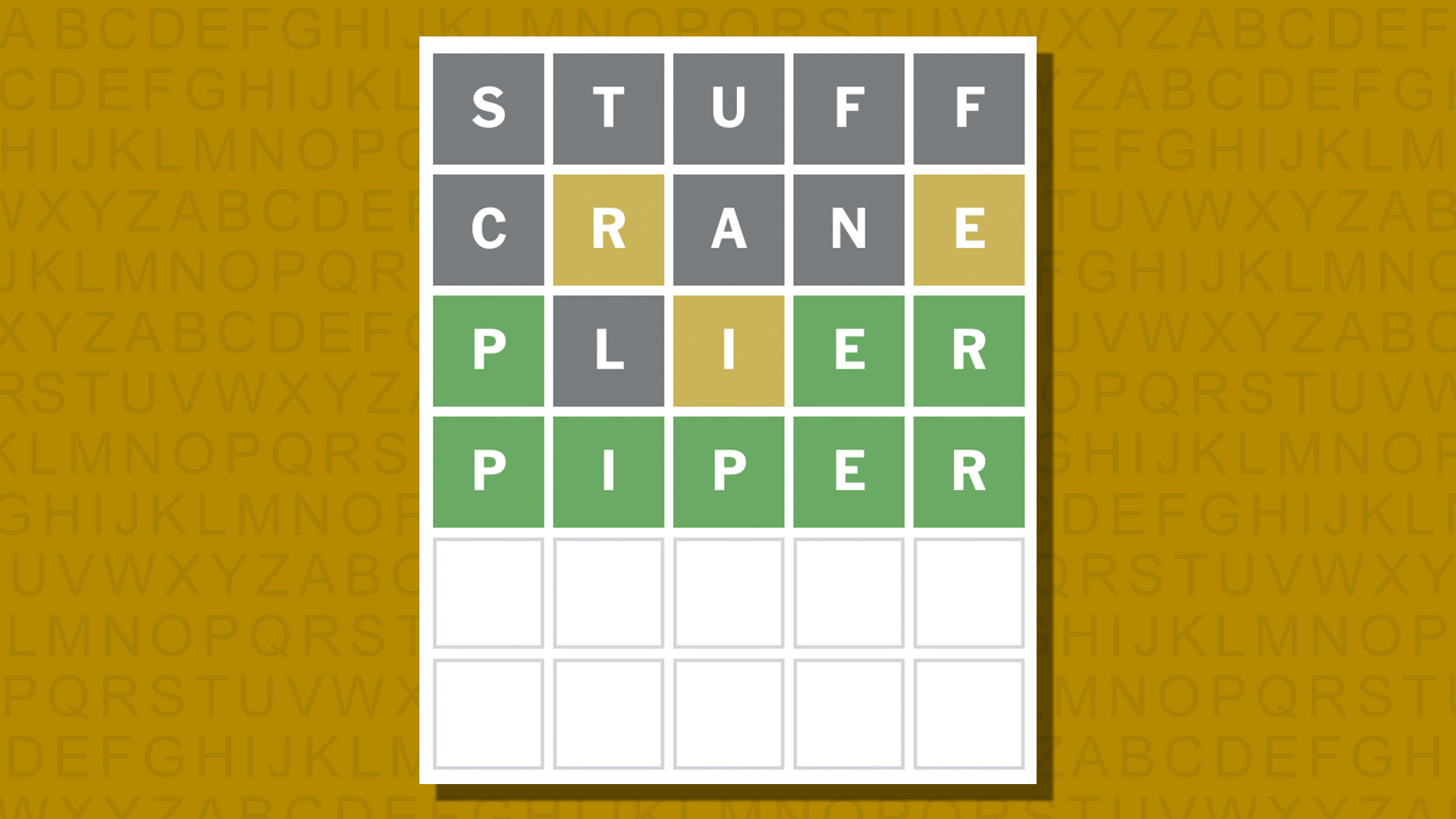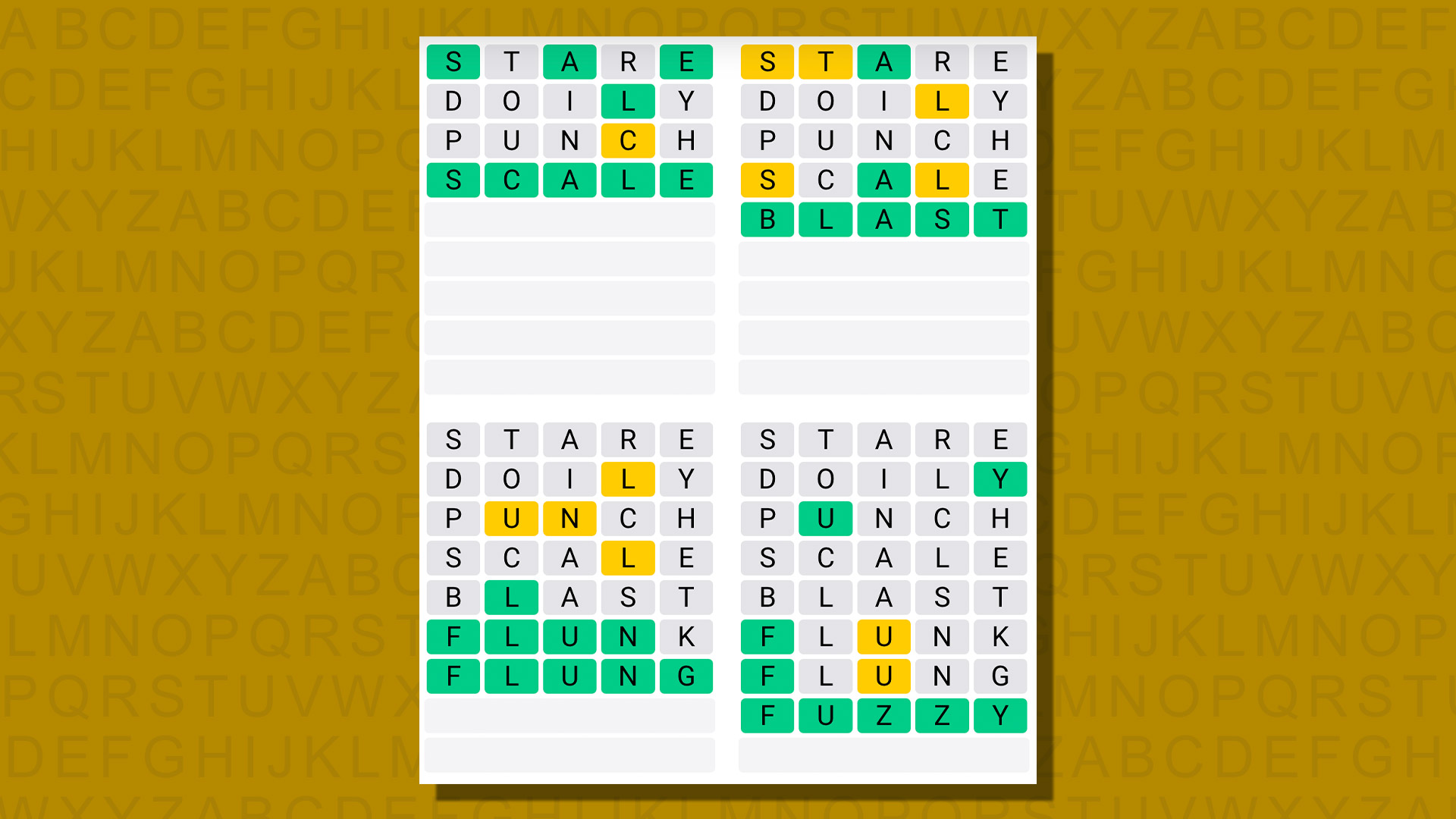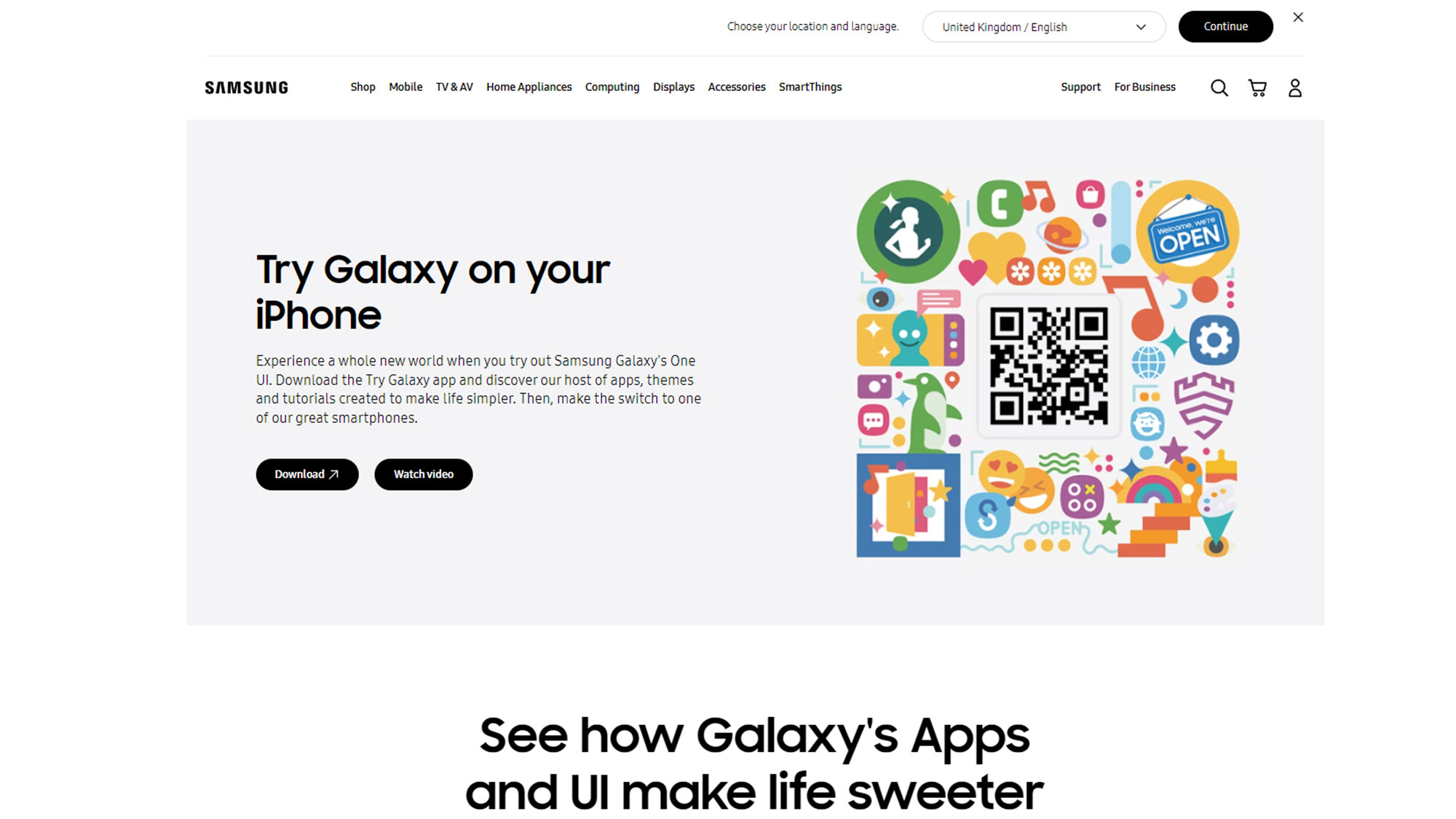
Month: February 2024
-

Today’s Wordle answer and hints for game #980, Saturday, February 24
Looking for Wordle hints? We can help. Plus get the answers to Wordle today and yesterday.Today’s Wordle answer and hints for game #980, Saturday, February 24Today’s Wordle answer and hints for game #980, Saturday, February 24 -

Quordle today – hints and answers for Saturday, February 24 (game #761)
 Looking for Quordle clues? We can help. Plus get the answers to Quordle today and past solutions.
Looking for Quordle clues? We can help. Plus get the answers to Quordle today and past solutions.Go Here to Read this Fast! Quordle today – hints and answers for Saturday, February 24 (game #761)
Originally appeared here:
Quordle today – hints and answers for Saturday, February 24 (game #761) -

You can now try out Samsung’s Galaxy AI on any smartphone – here’s how
 Samsung is rolling out Try Galaxy to Android allowing users to see what it’s like to use the Galaxy S24 line’s AI features.You can now try out Samsung’s Galaxy AI on any smartphone – here’s howYou can now try out Samsung’s Galaxy AI on any smartphone – here’s how
Samsung is rolling out Try Galaxy to Android allowing users to see what it’s like to use the Galaxy S24 line’s AI features.You can now try out Samsung’s Galaxy AI on any smartphone – here’s howYou can now try out Samsung’s Galaxy AI on any smartphone – here’s how -
US agencies pause Biden-sanctioned emergency miner survey following lawsuit
The Energy Information Administration (EIA) paused the controversial survey of crypto mining firms on Feb. 23 following a lawsuit from members of the crypto mining sector. Crypto mining company Riot Platforms and the Texas Blockchain Council launched the lawsuit on Feb. 22. The case names the EIA, the Department of Energy, the Office of Management […]
The post US agencies pause Biden-sanctioned emergency miner survey following lawsuit appeared first on CryptoSlate.
Originally appeared here:
US agencies pause Biden-sanctioned emergency miner survey following lawsuit -
Can rising liquidity help AVAX’s prices?
AVAX’s stablecoin liquidity reached a yearly high, boosting confidence amidst ecosystem.
Interest in DeFi grew, however NFT volumes fell.Over the past few days, the Avalanche [AVAX] network
The post Can rising liquidity help AVAX’s prices? appeared first on AMBCrypto.
Can rising liquidity help AVAX’s prices?Can rising liquidity help AVAX’s prices? -
Never-before-seen Satoshi Nakamoto emails add several details to Bitcoin’s origin lore
Private email correspondence between the pseudonymous Bitcoin creator Satoshi Nakamoto and an early contributor to the project, Martii Malmi, has shed further light on the origin story of the flagship crypto and its creator’s earliest thoughts about the future. The emails were shared as evidence by Malmi in the Crypto Open Patent Alliance (COPA) vs. […]
The post Never-before-seen Satoshi Nakamoto emails add several details to Bitcoin’s origin lore appeared first on CryptoSlate.
Originally appeared here:
Never-before-seen Satoshi Nakamoto emails add several details to Bitcoin’s origin lore -
BNB crosses $370 as holders anticipate airdrop
BNB has reclaimed a price level not seen in over a year.
The BNB chain has integrated another DeFi platform.Binance Coin [BNB] has recently experienced a notable increase in certain key me
The post BNB crosses $370 as holders anticipate airdrop appeared first on AMBCrypto.
Go here to Read this Fast! BNB crosses $370 as holders anticipate airdrop
Originally appeared here:
BNB crosses $370 as holders anticipate airdrop -

Understanding Direct Preference Optimization

A look at the “Direct Preference Optimization:
Your Language Model is Secretly a Reward Model” paper and its findings
Image by the Author via DALL-E This blog post was inspired by a discussion I recently had with some friends about the Direct Preference Optimization (DPO) paper. The discussion was lively and went over many important topics in LLMs and Machine Learning in general. Below is an expansion on some of those ideas and the concepts discussed in the paper.
Direct Preference Optimization (DPO) has become the way that new foundation models are fine-tuned. Famously Mixtral 8x7B, the Sparse Mixture of Experts model created by Mistral, was able to reach LLaMa 70B levels of performance with significantly fewer parameters by using DPO. Naturally, this success has led many in the community to begin fine-tuning their own models with DPO.
Let’s dive into what exactly DPO is and how we got here.
High Level Discussion
Let’s begin with setting out what fine-tuning should do from a high level. Once you have a pre-trained a model to have strong generative capacities, you typically want to control its output somehow. Whether that be optimizing it to respond in dialogue as a chat-bot or to respond in code rather than English, the goal here is to take an LLM that is already functional and find a way to be more selective with its output. As this is machine learning, the way we show it the right behavior is with data.
There are some key terms here I’ll define before we start diving into the technicals:
Loss Function — a function we use as a guide to optimize performance of our model. This is chosen based on what has been found to be effective
KL Divergence— stands for Kullback–Leibler divergence, which is a way to measure the difference between two continuous probability distributions. To learn more about this, there is a wonderful post by Aparna Dhinakaran on the topic.
Policy — an abstraction that describes how a neural network will make decisions. Put a different way, if a neural network is trained 3 times, each time it will have a different policy, whose performances you can compare.
The Status Quo before DPO (PPO)
Before DPO, we used to have to train an entirely separate model to help us fine-tune, typically called the reward model or RLHF model. We would sample completions from our LLM and then have the reward model give us a score for each completion. The idea here was simple. Humans are expensive to have evaluate your LLMs outputs but the quality of your LLM will ultimately be determined by humans. To keep costs down and quality high, you would train the reward model to approximate the human’s feedback. This is why the method was called Proximal Policy Optimization (or PPO), and it lives or dies based on the strength of your reward model.

Figure 1 from the paper showing how PPO works The Math behind PPO
To find the ideal reward model, we assume human preferences are more probabilistic than deterministic, so we can represent this symbolically in the Bradley-Terry model like below.

Equation 1 from the paper Going variable by variable, p* means that this is the optimal probability distribution, or the one the model should treat as the source of truth. y₁ and y₂ are 2 completions from the model that we are going to compare, and x is the prompt given to LLM. r* means that the reward function is optimal, or put another way, to train the model to approximate the optimal probability distribution, you give it the rewards from the optimal reward function.
Nevertheless, the perfect probability distribution of human preference is difficult, if not impossible, to know. For this reason, we focus on the reward model , so we need to find a way to figure out r*. In machine learning, we often use loss minimization to estimate complex issues. If we have access to training data that shows us what human preferences truly are, and thus would give scores that are part of the p* distribution, then we can use those samples to train the reward model like below:

Equation 2 from the paper Here rϕ is the rewards model we are training, D is a set of the samples we are training on, yw is the preferred completion and yl is the dispreferred completion. The authors have chosen to frame the problem as a binary-classification problem, which we will see why later on, but for now just remember this is why we have yw and yl.
Once we have optimized our reward model, we use it to fine-tune the LLM using a difference between the old policy (π ref) and the new policy (π θ). Importantly, we are doing a KL divergence to prevent the model from shifting too much.
Why don’t we want it shifting too much? Remember the model is already mostly functional, and it has taken quite a lot of compute resources to reach this level. Consequently, we want to make sure the model retains many of the good traits it currently has while we focus on having it follow instructions better.

Equation 3 from the paper While the above methodology is effective — LLaMa2 for instance was fine-tuned this way — it has a one major weakness: it requires training an entirely separate model, which is costly and requires huge amounts of additional data.
How does DPO improve on this?
DPO removes the need for the rewards model all together! This allows us to avoid training a costly separate reward model and incidentally, we have found that DPO requires a lot less data to work as well as PPO.

Figure 1 from the paper showing a high level of how DPO works The Math behind DPO
The major leap stems from the KL constraint we placed on ourselves in equation 3. By adding this constraint, we can actually derive the ideal policy that will maximize a KL-constrained rewards model. The algebra is shown below:

Appendix A.1 from the paper showing how we can maximize a KL Divergence Bound Rewards Model For our purposes, the most important point to take away is that we now have the below equation for a policy π r, such that the reward function r is easily solved for.

Equation 4 from the paper Naturally, we immediately solve for r

Equation 5 from the paper Returning to our ideal probability distribution equation (equation 1), we can rewrite that so that each instance of r is replaced by equation 5.

Equation 6 from the paper What this has shown is that you don’t need the reward model to optimize the policy to follow the ideal probability distribution of human preferences. Instead, you can directly work on the policy to improve it (hence where Direct Preference optimization gets its name from). We are using the probabilities that your LLM generates for each token to help it fine-tune itself.
To finish the derivation, we do the same math as we did in equation 3 to come up with our loss optimizing function to optimize for the policy.

Equation 7 from the paper That was a lot of algebra, but equation 7 is the most important one to understand, so I’ll break down the most important pieces. We now have an equation which will compare the policy probabilities of the old policy (π ref) and the new policy (π θ) for a winning completion (yw) and a losing completion (yl). When we compare these, we are optimizing so that that yw is bigger, as this would mean that the policies are getting better at giving winning responses than losing responses.
Consequences
First, DPO does not require a reward model! You simply need high quality data so that the model has a clear direction of what is good and bad, and it will improve.
Second, DPO is dynamic. Every time you use new data, it is going to adapt immediately thanks to the way it figures out the right direction to go. Compared to PPO, where you have to retrain your reward model each time you have new data, this is a big win.
Third, DPO allows you to train a model to avoid certain topics just as much as it will learn to give good answers for others. One way to conceptualize the new loss equation is as a signal that points our training in the right direction. By using both a good and bad example, we are teaching the model to avoid certain responses as much as we tell them to go towards others. As a large part of fine-tuning involves the model ignoring certain subjects, this feature is very valuable.
Closing Thoughts

Figure 2 from the paper showing comparative performance between DPO, PPO, and other methodologies Understanding the consequences of DPO’s math make me more optimistic about the future of LLMs.
DPO requires less data and compute than PPO, both of which are major contributors to the cost of making your own model. With this cost reduction, more people will be able to fine-tune their own models, potentially giving society access to more specialized LLMs.
Moreover, as DPO explicitly requires good and bad examples, while PPO only asks for good ones, it is much better at restricting behavior. This means that LLMs can be made far safer, another piece that will allow them to help out society.
With forces like DPO giving us access to better quality LLMs that can be more easily trained, it is an incredibly exciting time for this field.
[1] R. Rafailov, et al., Direct Preference Optimization: Your Language Model is Secretly a Reward Mode (2023), arXiv
[2] A. Jiang, et al., Mixtral of Experts (2024), ArXiv
Understanding Direct Preference Optimization was originally published in Towards Data Science on Medium, where people are continuing the conversation by highlighting and responding to this story.
Originally appeared here:
Understanding Direct Preference OptimizationGo Here to Read this Fast! Understanding Direct Preference Optimization
-

Modeling Dependent Random Variables Using Markov Chains

Correcting violations of independence with dependent models
Originally appeared here:
Modeling Dependent Random Variables Using Markov ChainsGo Here to Read this Fast! Modeling Dependent Random Variables Using Markov Chains
-

Amazon launches weekend Apple sale, dropping prices to as low as $24
 Amazon’s weekend deals are heating up, with Apple products ranging from the Apple Pencil 2 to M3 MacBook Pros up to 40% off.
Amazon’s weekend deals are heating up, with Apple products ranging from the Apple Pencil 2 to M3 MacBook Pros up to 40% off.
Dozens of Apple products are on sale at Amazon.As February winds to a close, month-end sales on Apple products are ramping up, with Amazon knocking up to 40% off popular hardware and accessories.
Go Here to Read this Fast! Amazon launches weekend Apple sale, dropping prices to as low as $24
Originally appeared here:
Amazon launches weekend Apple sale, dropping prices to as low as $24